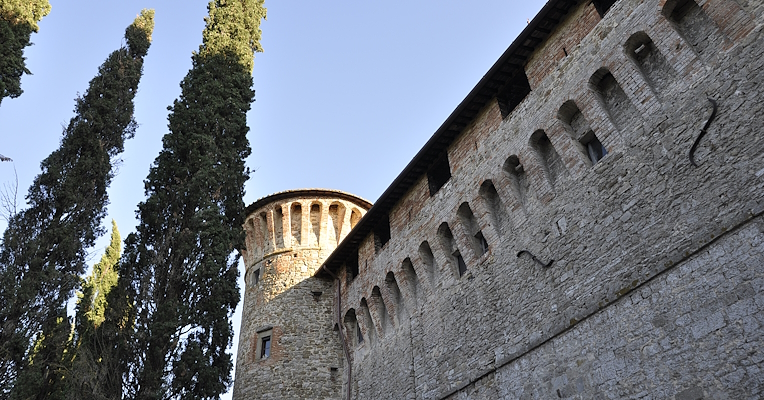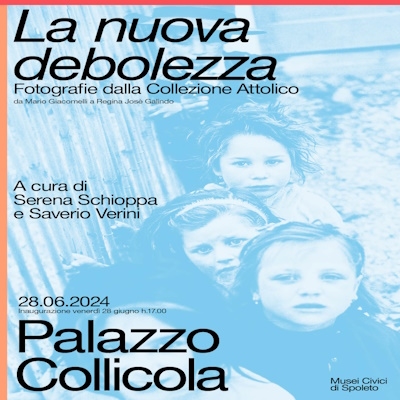The Castles of Magione on Lake Trasimeno - The Castles of Magione on Lake Trasimeno

A landscape dotted with forts
The “lake of Perugia”, as referred to in historical documents, played a strategic role as an outpost and defense of the territory. This area was also vital for its economic development. Not surprisingly, on the panels of the Fontana Maggiore, Perugia is represented as a wealthy matron holding a cornucopia, a symbol of abundance, with personifications of the territories contributing to its prosperity on either side: Domina Clusi (lady of the Chiusi region), bringing wheat and cereals, and Domina laci (lady of the lake), holding lasca, the tasty endemic fish of Lake Trasimeno.
Allowing it to be invaded and occupied by other powers was not an option. The gentle hills and shores of Lake Trasimeno are, therefore, dotted with towers, fortresses, and walled villages. The different types of fortifications served various needs: fortified rural settlements, strongholds, isolated towers, and fortresses, likely part of a defensive system using smoke or mirror signals for warnings and defense.
Excursions in search of these castles offer surprising and unusual views of the lake.
In Magione, fortified villages such as Antria, Montesperello, San Savino, and Agello are easily reachable via the Trasimeno road that branches out from the town; the Knights of Malta Castle, just outside the settlement, can be visited during opening hours, while Rocca Monaldi and Rocca Baglioni Pompilij are currently private residences but can be admired externally during pleasant walks or bike rides with lake views, as can the Castle of Zocco.

Antria
Antria is a well-preserved hilltop castle, documented as far back as 1185. By 1258, it already had a robust surrounding wall. Although it suffered destruction and ruin multiple times, it still retains some medieval structures, including much of the walls, an access gate, some perimeter towers, and two medieval wells.

Montesperello
The Castle of Montesperello offers a particularly broad view, from Lake Trasimeno to the valleys surrounding Perugia and Magione. It was the original fief of the noble Perugian Montesperelli family. According to some sources, it was founded in 608 on Roman remains. Over the centuries, it played a crucial strategic role, being destroyed and rebuilt several times. During the Renaissance, it became a center of art and culture thanks to the patronage of its owners. Abandoned in the last century, it is now a venue for ceremonies and events. Just outside the castle walls is the parish church of San Cristoforo, featuring paintings by Gerardo Dottori from 1949.

San Savino
On the eastern shores of the lake, in an elevated position, lies the Castle of San Savino. The first known document on the fortified village dates back to 1006 when Count Pietro Attone of Todi decided to establish a monastery dedicated to Saint Savinus, bishop and martyr of Sulmona, in this location. No trace of this original settlement remains except in the name of the small center. To protect the monks, Attone built a square fortification with a single gate and a curious triangular watchtower. In 1310, to face the advancing imperial troops of Henry VII, the municipality of Perugia enhanced the castle's fortifications. Over the centuries, San Savino suffered the same fate as other fortified centers around Lake Trasimeno: lootings, destruction, and army incursions during the countless skirmishes between Perugia and other Tuscan cities vying for control of the lake. In 1566, Pope Paul V ordered the construction of a small port near the village, of which only traces remain today near the La Valle Nature Reserve. The medieval structures of the old castle include the walls, the beautiful ogival gate, the well, the triangular keep, and remains of dwellings. Near San Savino, at the nature reserve, you can admire what remains of the outlet canal built by Braccio Fortebraccio, lord of Perugia from 1416 to 1424, on the remains of a Roman one. Further renovations took place in 1896, marked by a public ceremony in San Savino attended by the Ministers of Treasury and Finance and other prominent authorities of the time.

Agello
Agello owes its name to the nymph Agilla, who fell deeply in love with the young Trasimeno, son of the god Tyrrhenus. Legend has it that Agilla led him to the lake, where he drowned, and, desperate, the nymph sank with him. Likely established as a castrum during the war against Hannibal (217 B.C.), in the 12th century, it was subjected to the municipality of Perugia and entrusted to a noble family, the Vincioli, or nobles of Agello. Perugian historiography attributes to this family Blessed Peter, founder and first abbot of the homonymous Benedictine abbey, the first cathedral of the city. In 1390, Perugian rebel Michelozzo Michelotti occupied Agello and made it his headquarters; Perugian troops quelled the revolt by partially destroying the castle. Rebuilt at the end of the 14th century, it was destroyed again in 1642. In the 19th century, it became notorious as a den of bandits and criminals. After all, during the medieval and modern eras, the entire Lake Trasimeno area was a hub for smuggling fish and cereals between Perugia and the Papal State with the Grand Duchy of Tuscany. Notable sights include Palazzo Vincioli, from the 13th/14th century, one of the most important examples of medieval civil architecture in the Trasimeno area.

Knights of Malta Castle
The imposing fortified building just outside the town of Magione dates back to 1150–1170, with modifications over the centuries. It was originally constructed as a structure for hospitality and care by the Knights Hospitaller, the current Knights of Malta, who still own the castle today. During the Middle Ages, the hospitaller structure was transformed into a square-shaped fortress with corner towers, built around a central courtyard. Its final transformation occurred in the 15th century, overseen by the Bolognese architect Fioravante Fioravanti.
Today, the Knights of Malta Castle is at the center of a significant agricultural estate and houses a sales point for high-quality olive oil and wine from the Trasimeno region. Some rooms are open to visitors by appointment, including the chapel with 16th-century frescoes, and guided tours can also be arranged.

Rocca Monaldi
Near Magione lies Rocca Monaldi, dating back to the 14th century. It was also known as the Rocca del Conte Angelo, named after a tragic event that occurred in the 15th century: Girolamo della Penna, known as the “Satan of Perugia,” murdered the rightful owner, Count Angelo Piccinino, at the tower.
Reduced to ruins by Florentine troops during a siege in 1478, it was later purchased by the Baglioni family. From the 16th century onward, it was owned by the Monaldi family, a prominent noble house from Perugia, from whom it took its name. Today, it remains private property but can be admired from the outside.

Rocca Baglioni Pompilij
Between San Feliciano and Monte del Lago is the fascinating Rocca Baglioni Pompilij. This beautiful example of 14th-century military architecture has undergone various reconstructions. Historical documents reveal that it belonged to Nicola di Tommaso Pesciaiolo in the 14th century. In 1372, the castle was expanded by Cola Masci, as stated in an inscription on the tower. It later came into the possession of the powerful Baglioni family, semi-rulers of Perugia in the 15th century, and finally the Pompilij family.
The structure retains some of its ancient features: a sandstone gate (now sealed) with a keystone carved with a fish, Palazzo Pula with its Renaissance portico and loggia, the 14th-century keep, other gates, and remnants of medieval dwellings.

Castle of Zocco
Built near Monte del Lago in Magione, the Castle of Zocco (13th century) appears to dominate Lake Trasimeno. Over the centuries, it was the most formidable military settlement in the area, equipped with seven towers, three gates, and a massive enclosing wall. Given its poor condition and private ownership, the castle is not accessible to visitors, but its charm can be appreciated from the road and the Trasimeno cycle path.

























